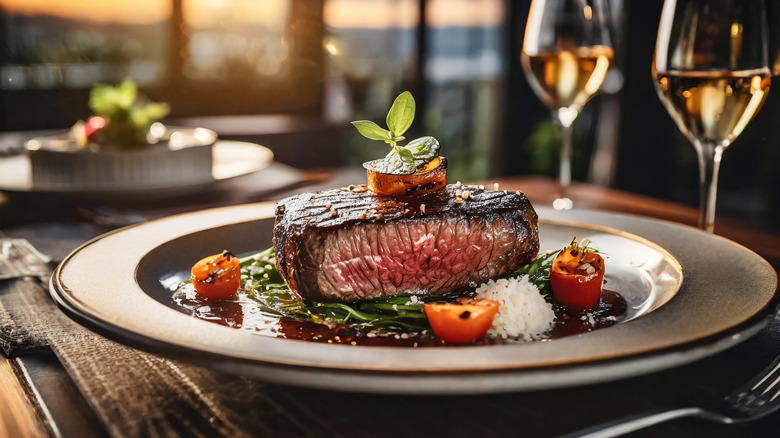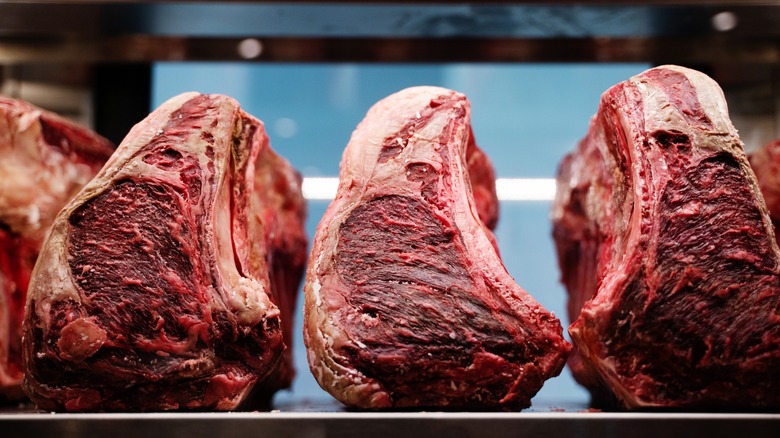What A Steakhouse Newbie Should Avoid Ordering
Steak can be intimidating. There are so many different cuts and ways to prepare those cuts. It's a lot to learn, especially if you are headed to a steakhouse for the first time, and you probably don't want to brush up on every cut of steak you need to know before you go. To take some of the guesswork out of the ordering equation, Daniel Ontiveros, Corporate Executive Chef at Carversteak, spoke exclusively to Daily Meal and shared what dish newbies should avoid ordering. Chef Ontiveros says, "Advice to the rookies — I would say stay away from a dry-aged steak. Just like wine, you want to ease your palate into appreciating new flavors and nuances rather than blowing away the experience."
What exactly is a dry-aged steak? It is going to sound a little gross, but this is a steak that undergoes a controlled rot where yeast and mold help break down the tough tissue. It's stored in a drying chamber at a temperature that is cold enough to prevent the yucky kind of bacteria from growing. The process allows for the steak to lose moisture at a consistent rate, which gives the steak a more concentrated flavor and a more tender, mouthwatering consistency than regular steak.
It's all about the flavor
The flavor of dry-aged is often described as funky for the uninitiated and nutty once you get the hang of it. If you are a fan of stinky cheeses like Pavin d'Auvergne, stilton, or blue cheese, you may enjoy that funky flavor. In fact, dry-aged steak gets beefier the longer it ages. But, that's not all — it also gets pricier.
Why is dry-aged steak more expensive than regular steak? Put simply, they take more time to produce, which proportionally raises the price. When you are ready to try a dry-aged steak for the first time, start with one that has been aged for 15 to 20 days, and you can then work your way up to one that has been aged for 60 or 90 days. Until then, stick with a nice filet mignon with red wine sauce or a ribeye with pepita-lime butter.

